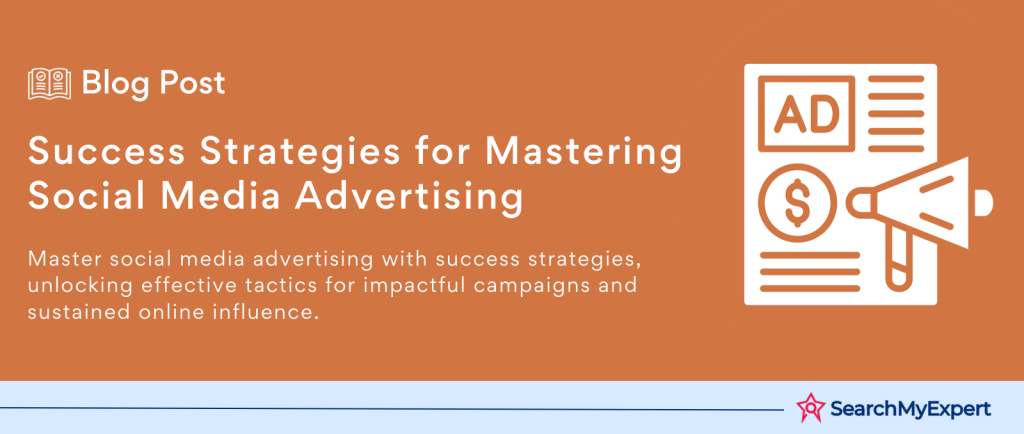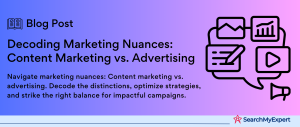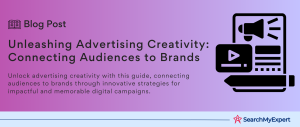Social Media Advertising
The Power of Social Media in Shaping Business Success
Social media advertising stands as a modern colossus in the digital marketing arena. It’s a vibrant, dynamic landscape where businesses, big or small, can amplify their voice, extend their reach, and drive meaningful engagement. But what exactly is it?
At its core, social media advertising is the use of social media platforms to promote products or services. This method harnesses the vast user bases of these platforms, tapping into a well of potential that’s deep and diverse. It’s a form of digital marketing, but one that’s uniquely interactive, allowing for real-time engagement and feedback.
Growth of Social Media: A Consumer Behavior Game-Changer
The explosion of social media’s popularity isn’t just a cultural shift; it’s a business revolution. Platforms like Facebook, Instagram, LinkedIn, and Twitter have evolved from mere networking sites to powerful marketing tools. This growth is significant for several reasons:
- Vast Audience:
Social media platforms boast billions of users globally, offering an unprecedented audience size for advertisers. - Consumer Insights:
These platforms provide rich data on user behavior, preferences, and demographics, making targeted advertising more accurate and effective. - Engagement Opportunities: Social media facilitates two-way communication, allowing businesses to interact directly with their audience, building relationships and loyalty.
- Brand Visibility: Regular presence on these platforms increases brand awareness and can influence consumer purchasing decisions.
Target Audience & Platforms
Finding Your Ideal Customer: The Keystone of Effective Advertising
The first step in any successful social media advertising campaign is identifying your ideal customer. This process involves understanding who your product or service is for and tailoring your advertising to appeal specifically to this group. Why is this crucial?
- Efficiency: Targeting a specific audience ensures your ad spend is used effectively, reaching those most likely to engage with your brand.
- Relevance: Ads tailored to a particular demographic are more likely to resonate, leading to higher engagement rates.
- Conversion Rates:
By reaching the right people, you’re more likely to see a return on your investment through conversions.
Navigating the Social Media Platform Maze
Each social media platform has its unique flavor, audience, and advertising strengths. Let’s break them down:
- Facebook:
With its vast user base, Facebook is ideal for reaching a broad audience. It excels in detailed targeting options and diverse ad formats. - Instagram:
A visual platform perfect for brands with strong visual content. It’s particularly effective for targeting younger demographics. - LinkedIn:
The go-to platform for B2B advertising. LinkedIn excels in reaching professionals and industry-specific audiences. - Twitter: Fast-paced and hashtag-driven, it’s great for timely campaigns and engaging with trends.
Choosing Your Platform: A Strategic Decision
Selecting the right platform(s) for your campaign is not about spreading yourself thin across all of them. It’s about where your target audience spends their time and how they interact with content. Consider the following:
- Audience Demographics: Match your customer profile with the user demographics of each platform.
- Content Suitability: Align your campaign’s content type (visual, text, video) with the platform’s strengths.
- Campaign Goals:
Different platforms may be more effective for different objectives (brand awareness, lead generation, etc.).
Campaign Goals & Objectives in Social Media Advertising
Tailoring Goals for Maximum Impact
Social media advertising thrives on well-defined goals. Understanding the nuances between awareness, engagement, and conversion goals is key to crafting a campaign that not only resonates with your audience but also delivers tangible results.
- Awareness Goals:
These are about making noise, getting your brand name out there. The focus is on reaching as many eyes and ears as possible, making potential customers aware of your brand or product. - Engagement Goals:
Engagement is about sparking a conversation. It’s not just about views; it’s about interactions – likes, shares, comments. This is where you build relationships with your audience. - Conversion Goals: The endgame of most campaigns. Conversion means action – whether it’s making a purchase, signing up for a newsletter, or downloading an app.
SMART Goals: The Blueprint for Success
To turn these broad goals into successful campaigns, they must be SMART:
- Specific: Clear, concise goals. E.g., “Increase website traffic by 20%”.
- Measurable: Quantifiable targets. E.g., “Gain 1000 new followers”.
- Achievable: Realistic and attainable within your resources.
- Relevant: Aligned with your brand’s broader marketing strategy.
- Time-bound: Set within a definite timeframe. E.g., “Achieve X in 3 months”.
Examples of Specific Objectives
- Brand Awareness:
Increase brand mentions by 30% within 2 months. - Lead Generation: Generate 500 new leads via a targeted LinkedIn campaign.
- Product Sales: Boost online sales by 25% through Instagram shopping ads.
Ad Formats & Creative Strategies
Embracing the Diversity of Ad Formats
Each social media platform offers a unique set of ad formats, each suited to different types of content and campaign goals.
- Images and Videos: The staples of social media ads. They’re direct, effective, and highly shareable.
- Stories: Ephemeral content on platforms like Instagram and Facebook, great for time-sensitive offers.
- Carousels: Multiple images or videos in a single ad, ideal for showcasing different products or telling a brand story.
Crafting Compelling Creatives
The heart of any ad is its creative content. Here’s how to make it stand out:
- Visuals: Use high-quality, eye-catching images or videos that align with your brand identity.
- Messaging: Keep it concise and impactful. Your message should resonate with your target audience and prompt action.
- Branding:
Consistent branding across all ads helps in building brand recognition.
Best Practices for Effective Ad Copy
- Know Your Audience:
Tailor your language and tone to suit your target demographic. - Call-to-Action:
Always include a clear CTA. Tell your audience what you want them to do next. - Test and Learn:
Experiment with different copy styles to see what works best for your audience.
Budgeting & Bidding Strategies in Social Media Advertising
Mastering the Art of Budget Allocation
Budgeting in social media advertising can be a balancing act. It’s about optimizing your spend to maximize results. There are two main types of budgeting methods:
- Daily Budget:
This is the average amount you’re willing to spend on a campaign each day. It offers flexibility and control over daily spending, ideal for short-term campaigns or testing new strategies. - Lifetime Budget:
A fixed amount set for the entire duration of the campaign. It’s suitable for campaigns with a specific end date and allows the platform to optimize spending over time.
Navigating Bidding Strategies
Bidding is how you compete for ad space. The two common strategies are:
- Cost-Per-Click (CPC):
You pay only when someone clicks on your ad. Ideal for driving traffic to a website or landing page. - Cost-Per-Impression (CPM): Here, you pay per thousand impressions (views) of your ad. This is great for building brand awareness.
Budget Optimization for Maximum ROAS
To get the most out of your social media advertising budget:
- Set Clear Goals: Align your budget with your campaign objectives.
- Start Small and Scale:
Begin with a smaller budget to test ad effectiveness before scaling up. - Monitor and Adjust:
Regularly review your campaign’s performance and adjust your budget and strategy accordingly.
Measurement & Analytics in Social Media Advertising
The Power of Performance Metrics
Tracking the right metrics is crucial in measuring the success of your social media ads. Key metrics include:
- Impressions:
The number of times your ad is displayed. - Clicks: The number of clicks on your ad.
- Conversions: Actions taken as a result of your ad, like purchases or sign-ups.
Harnessing Analytics Tools for Data-Driven Decisions
Platforms like Facebook Ads Manager and Instagram Insights provide valuable data about your ad performance. These tools help you:
- Understand Audience Engagement: Learn how your audience interacts with your ads.
- Track Campaign Performance: Monitor metrics like reach, engagement, and conversion rates.
- Optimize Ads: Use data to refine your targeting, creative content, and overall strategy.
The Role of A/B Testing in Ad Optimization
A/B testing involves comparing two versions of an ad to see which performs better. This practice is vital for:
- Refining Ad Elements:
Test different creatives, headlines, or calls to action to find the most effective combination. - Making Data-Driven Decisions: Use empirical evidence to inform your ad strategy.
- Continuous Improvement:
Regular testing leads to ongoing enhancements in your ad campaigns.
Embracing the Future of Social Media Advertising
Key Takeaways and Benefits
Social media advertising stands as a powerful tool in the digital marketer’s arsenal. It offers unparalleled reach, precise targeting, and the ability to engage directly with audiences. Key takeaways include:
- Diverse Platforms: Each social media platform offers unique advantages, making it crucial to choose the right one for your campaign.
- Targeted Advertising: The ability to target specific demographics enhances the effectiveness of your ads.
- Measurable Results: With advanced analytics, you can track the performance of your campaigns and make data-driven decisions.
Looking Ahead: Emerging Trends
The world of social media advertising is ever-evolving. Staying ahead of the curve involves understanding and leveraging emerging trends:
- Influencer Marketing: Partnering with influencers can extend your reach and add authenticity to your brand.
- Social Commerce:
Platforms are increasingly integrating shopping features, making it easier for users to make purchases directly through social media. - Personalized Ad Experiences:
Advanced algorithms are enabling more personalized and relevant ad experiences for users.
The Road to Long-Term Success
Success in social media advertising doesn’t come from standing still. It’s about experimentation, adaptation, and staying abreast of changes in the landscape. Embrace innovation, be ready to pivot strategies, and keep learning. The future of social media advertising is bright for those willing to evolve with it.
Conclusion
In this journey through the realm of social media advertising, we’ve uncovered its vast potential and navigated its many facets. From understanding different platforms and their unique strengths to mastering budgeting and bidding strategies, we’ve seen how social media advertising can be a game-changer for businesses. Embracing emerging trends like influencer marketing and social commerce, while continually adapting to the personalized needs of the audience, remains key. As the landscape evolves, so must our strategies, ensuring that our approach to social media advertising remains as dynamic and impactful as the platforms themselves.
Experience growth with our expert Advertising Services.
Table of Contents
Toggle






